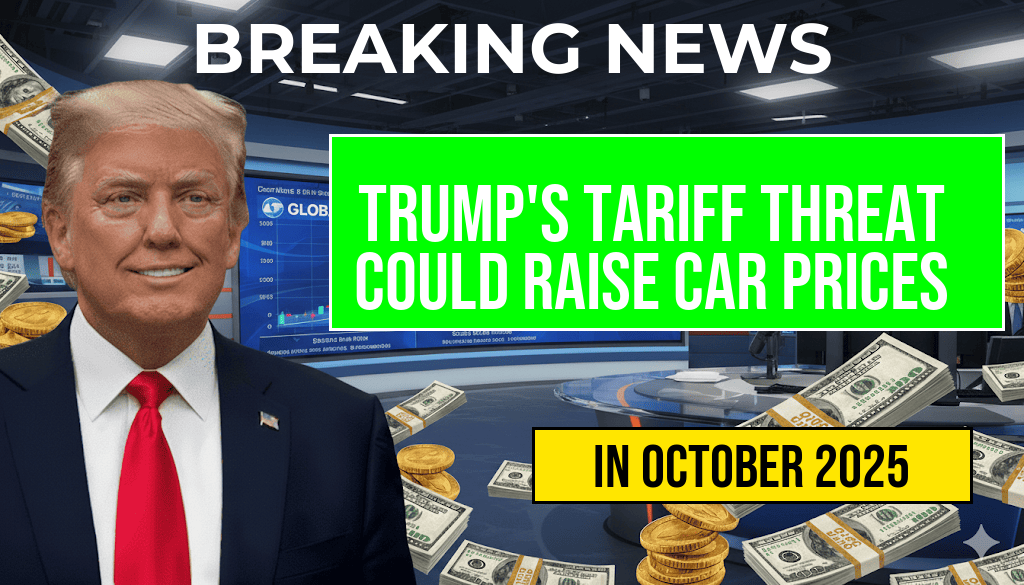Potential changes in U.S. trade policy under the Biden administration are drawing increased attention as former President Donald Trump signals a possible return to aggressive tariff strategies. Recent statements suggest that Trump may consider reimposing tariffs on imported vehicles, a move that could significantly inflate vehicle prices across the market. Analysts warn that such measures could lead to an average increase of up to $5,286 per vehicle, affecting consumers, automakers, and the broader economy. With the automotive industry already grappling with supply chain disruptions and inflationary pressures, the prospect of heightened tariffs introduces new uncertainties. Industry insiders and economic experts are closely monitoring developments, emphasizing that any escalation in trade barriers could reshape vehicle pricing dynamics and consumer purchasing behavior in the United States.
Potential Impact of Tariffs on Vehicle Prices and Market Dynamics
Tariff Reinstatement and Its Expected Cost Implications
If Trump proceeds with reinstating tariffs on imported vehicles, the cost burden would likely be transferred to consumers, resulting in higher sticker prices. According to industry analysis, a 25% tariff on imported cars and auto parts could inflate the average vehicle price by approximately $5,286. This figure considers typical vehicle prices and the proportion of imported components in modern automobiles. For context, the average new vehicle price in the U.S. stood at around $48,000 as of 2023, making the potential increase significant for many buyers.
Factors Contributing to Price Fluctuations
- Import Dependency: Many automakers rely heavily on imported parts and vehicles, notably from countries like Japan, Germany, and South Korea.
- Supply Chain Disruptions: Ongoing global supply chain issues, including chip shortages, compound the impact of tariff hikes.
- Consumer Demand: As vehicle prices rise, consumer purchasing patterns could shift, potentially dampening demand or prompting a move towards used vehicles.
Industry Response and Market Outlook
Automakers and industry associations have expressed concern about the potential reinstatement of tariffs, citing risks to profitability and consumer affordability. The Alliance for Automotive Innovation, representing major automakers, warned that increased costs could slow sales and hinder employment in the sector. Conversely, some policymakers argue that tariffs could bolster domestic manufacturing and protect U.S. auto industry jobs.
Historical Context and Trade Policy Implications
Past Tariff Strategies and Market Effects
During Trump’s previous tenure, tariffs on steel, aluminum, and certain imported vehicles prompted immediate price increases and supply chain adjustments. A 2018 analysis by the Forbes highlighted how tariffs contributed to increased costs for automakers and consumers alike. While tariffs aimed to promote domestic manufacturing, they also risked provoking retaliatory measures from trading partners, potentially escalating into broader trade conflicts.
Potential Political and Economic Repercussions
Reintroducing tariffs could recalibrate international trade negotiations and impact diplomatic relations with key auto-exporting nations. Economists warn that such policy moves might trigger inflationary pressures, influence currency exchange rates, and alter the competitive landscape for U.S. automakers versus foreign rivals. Market analysts are also considering the ripple effects on related sectors, such as logistics and retail.
Consumer Considerations and Market Alternatives
Options for Buyers Amid Price Uncertainty
| Vehicle Type | Average Current Price | Estimated Price Increase | New Estimated Price |
|---|---|---|---|
| Compact Car | $25,000 | $1,560 | $26,560 |
| SUV | $40,000 | $2,498 | $42,498 |
| Luxury Sedan | $60,000 | $3,747 | $63,747 |
Consumers may consider alternative strategies such as purchasing used vehicles, exploring domestically produced models, or delaying new car purchases until market conditions stabilize. Dealerships and financial institutions are also preparing for shifts in demand and financing rates, which could be influenced by broader economic policies.
Broader Economic and Policy Considerations
The potential tariff reinstatement underscores ongoing debates about balancing trade protection with market competitiveness. While tariffs can shield domestic industries, they often come at the expense of higher consumer costs and strained international relations. Policymakers face the challenge of navigating these complex trade-offs, especially as global markets continue to recover from recent disruptions.
For additional insights into the effects of tariffs and trade policies on the automotive sector, visit Wikipedia’s trade war overview or review recent analyses on Forbes.
Frequently Asked Questions
What is the main concern regarding Trump’s tariff threat on new cars?
The primary concern is that tariff threats could lead to an increase in vehicle prices by up to 5,286 dollars, making new cars more expensive for consumers.
How might tariffs impact the overall car market?
Tariffs could disrupt supply chains and increase costs for manufacturers, resulting in higher vehicle prices and potentially affecting availability and choices for buyers.
Which vehicles are most likely to be affected by the proposed tariffs?
Imported vehicles and auto parts from countries subject to tariffs are most at risk, potentially leading to significant price hikes across various models.
What can consumers do to prepare for possible price increases?
Consumers may consider buying sooner to lock in current prices, exploring alternative models, or researching options that might be less affected by tariffs.
How likely is it that the tariff threat will be implemented fully?
The likelihood depends on ongoing trade negotiations and policy decisions. Consumers and industry stakeholders should stay informed about government announcements and market trends.

Leave a Reply